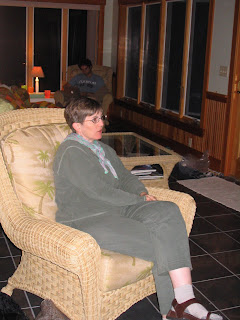An article in October’s “American Libraries” by Meredith Farkas, called, “Learning on a Shoestring” (p45) caused me to ponder the pros and cons of long-distance conferencing.
Farkas is convincing – “Your next conference may be on your desktop.” The pros of online conferences are obvious: one saves time, money and days off as down-time (not conference time), and those whose jobs do not include perks such as conference travel can acquire professional development by attending conferences on line. Indeed, modern technology links us to experts, with whom we can carry on conversations about the latest issues in technology and libraries. Farkas points out that live web programming is free and can be for patrons not just for staff. Farkas, who calls these online programs “class acts,” might inadvertently be addressing the best aspect of online programs – that they can minimize class divides by looping in more rank-and-file people who, for whatever reason, do not enjoy privileges, such as travel and conferencing.
The good news for this swath of folks is called OPAL – Online Programming for All Libraries (www.opal-online.org). This program reminds me of ILL in that it is a collaborative effort among libraries and organizations offering online programming to staff and patrons. By pooling their resources they can pay for the expensive web-conferencing software. If people miss a conference, they can access the OPAL archives, freely download the conference and listen to it in the comfort of their computer room.
Besides OPAL, there’s SirsiDynix Institute (www.sirsidynixinstitute.com), which offers “webinars” led by regular keynote speakers at conferences. I attended one of these on virtual gaming, and I found it very interesting. I downloaded and printed out the power point presentation and put it in a binder for staff at my library, who found it very interesting.
The cons about online conferencing for me are, it’s a less natural setting. Also, you don’t get a change of scene from the normal workplace. There isn’t the kind of face-to-face interaction (social networking) that invigorates and can be a catalyst for new possibilities both professionally and personally. Travelling to other cities and places is thrilling and expands one’s view. It offers opportunities to see other libraries, too. I am infused with new energy after travelling. Staying home too long nurses a static feeling in me. There is nothing like live conferences. It’s a lot like live theatre. Mel Brooks said in an interview in a recent Newsweek that you don’t get goose bumps from a movie, but you always get them from good live theatre. There’s a charge linked to live interaction that you just don’t get online. Finally, what about serendipity? That is, the times at a conference when you decide to go to this program instead of another and it makes a huge impression. That’s a wonderful occurrence that won’t happen with webinars. And live discourse is more exciting and naturally unfolding than that of long-distance conferencing.
However, I seek inspiration just a few times a year. Inbetween, webinars and online programming suit me just fine. Online programming meets many educational and financial needs, as Farkas points out: “There is so much useful information being shared in the online world these days that anyone can continue their education without spending a dime.” As always with history and progress, it doesn’t make sense to insist on pitting new against old. Why not use all available opportunities and recognize that each is unique and all can be used to our advantage?
Subscribe to:
Post Comments (Atom)

1 comment:
I agree with your assessment of the pros and cons of online programming. Great for some things and not for others. The goosebump factor of Mel Brooks is wonderful. There really is a difference when we interact in person.
Post a Comment